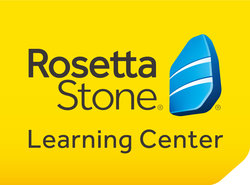Global Career Guide


- 外資系転職求人 Daijob.com TOP
- Global Career Guide
- ビジネス英語テクニック
- ビジネス英語テクニック ビジネスの場での自己紹介
ビジネス英語テクニック ビジネスの場での自己紹介

面識のない人々があふれる部屋。ビジネスにつながる可能性のある人物に話しかけようと思っているのに、どうしてもきっかけが掴めない…。これは珍しいシチュエーションではありません。私にも同じような経験が少なからずあり、話しかけるタイミングを計るのは大変でした。それもプロフェッショナルらしい振る舞いを心がけ、相手に無遠慮だと思われないようにしなくてはいけないのですから。ネットワーク作りの場において良い第一印象を与えるのが不可欠なのは言うまでもありません。前回ご紹介したアイスブレイクの方法に続き、今回は効果的な会話の進め方についてお話ししますね。
Everyone has been there: you are in a room full of people that you don’t know and you are desperately looking for a chance to speak to other potential business contacts but can’t find the right moment. There have been many times in the past where I have also had to learn how to time my introductions well enough to come across professional and not seem intrusive. Making a great first impression at networking events is essential to widening your contact base and growing your business. Further to my previous blog on breaking the ice, I would like to take this opportunity to look at how we effectively introduce ourselves and others.
それでは、交流会で初めて知り合ったビジネスパーソンTom SamuelsとDan Greenの会話を通して、自己紹介のプロセスを見ていきましょう。
まずは失礼のないように相手の注意を引きます。
- Tom: Excuse me. May I interrupt?(すみません、ちょっとよろしいですか?)
- Dan: Of course.(ええ、構いませんよ。)
In order to give a clearer idea of how the introduction process works, let’s look at a conversation between Tom Samuels and Dan Green. They are both businessmen and are both meeting for the first time at a networking event.
The first stage is to interrupt politely:
Tom: Excuse me. May I interrupt?
Dan: Of course
続いてTomはDanに断りをいれてから自己紹介をします。これが礼儀にかなっているとされる順序です。ここまでで「may」という単語が何度か使われているのにお気づきでしょうか。「can」や「could」に比べて「may」はよりソフトかつフォーマルだとされています。
- Tom: May I introduce myself? My name is Tom Samuels from ABC corporation. Nice to meet you. (自己紹介させていただいてもよろしいですか?初めてお目にかかります。私、ABC社のトム・サミュエルズと申します。)
(握手する)
- Dan: Pleasure to meet you too. I’m Dan Green from DEF Technologies.(初めまして。私はDEFテクノロジーのダン・グリーンと申します。)
Tom will then introduce himself by asking Dan’s permission – this is considered polite after interrupting. Notice how we use ‘may’ a lot. ‘May’ is considered to be softer and more formal than ‘can’ or ‘could’:
- Tom: May I introduce myself? My name is Tom Samuels from ABC corporation. Nice to meet you.
- (Shake hands)
- Dan: Pleasure to meet you too. I’m Dan Green from DEF Technologies.
Danは「Nice to meet you」の別の表現、「Pleased to meet you」で応えます。どちらも同じような意味ですが、言い換えることで会話が単調にならずにすみます。
DanとTomはそれぞれの職業について話し始めます。
- Tom: What do you do?(お仕事は何をされているんですか?)
- Dan: I’m working as an engineer on the Skymark project. I’m responsible for checking the aircraft engines before they are shipped to the airlines. How about you?(スカイマーク・プロジェクトでエンジニアとして働いています。航空会社に出荷する前に飛行機のエンジンをチェックするのが私の仕事です。そちらのお仕事は?)
- Tom: Oh, I’m in sales. I’m in charge of coordinating our sales team in south-east Asia.(販売業です。東南アジアの販売チームをまとめる責任者なんです。)
- Dan: What does your company do?(御社は何をしている会社なんですか?)
- Tom: We manufacture car parts and ship them to major automobile companies around the world.(自動車部品を製造して、世界中の主要自動車会社へ出荷しています。)
- Dan: That’s interesting …(それは興味深いですね。)
Dan responds with a variation of ‘nice to meet you’ by switching to ‘pleasure to meet you’. Both ‘nice’ and ‘pleasure’ have the same function here but serve to vary the exchange and keep it interesting.
Dan and Tom now start to discuss their occupations:
- Tom: What do you do?
- Dan: I’m working as an engineer on the Skymark project. I’m responsible for checking the aircraft engines before they are shipped to the airlines. How about you?
- Tom: Oh, I’m in sales. I’m in charge of coordinating our sales team in southeast Asia.
- Dan: What does your company do?
- Tom: We manufacture car parts and ship them to major automobile companies around the world.
- Dan: That’s interesting…
職務について言及するとき、「responsible for」と「in charge of」の間に明確な違いはありません。ですが「in charge of」には「社内のある業務を管理しており、そのポストにいるのは一人だけ」というニュアンスがあります。
ここでTomはDanにLucy Winterという同僚を紹介します。この二人には共通点がありそうだと考えたのです。TomはここでもDanに断りを入れますが、お互い少し打ち解けてきたので今度は「may」の代わりに「can」を使っています。
- Tom: Can I introduce you to Lucy Winters? Lucy, this is Dan Green from DEF Technologies.(同僚をご紹介してもいいですか?ルーシー・ウィンターです。ルーシー、こちらはDEFテクノロジーのDan Greenさん。)
- Dan: Pleasure to meet you, Lucy.(初めまして、ルーシー。)
- Lucy: Pleasure to meet you too.(初めまして。)
- Tom: Lucy is in charge of our Malaysian office.(ルーシーはマレーシア支社の責任者なんですよ。)
- Dan: Really? We have an office in Malaysia too.(そうなんですか?うちもマレーシアに支社があるんですよ。)
Lucy: Is that so? Let me give you my business card…(そうなんですね!よろしかったら名刺を差し上げたいのですが…)
There is not a stark difference between using ‘responsible for’ and ‘in charge of’ when talking about roles, however ‘in charge of’ suggests that you are heading or controlling a particular activity in the company and that it is your task alone
At this stage, Tom wishes to introduce his colleague Lucy Winters to Dan as he thinks the two may have something common. Notice how Tom asks Dan’s permission again and that he switches to ‘can’ as they have become more comfortable with each other:
- Tom: Can I introduce you to Lucy Winters? Lucy, this is Dan Green from DEF Technologies.
- Dan: Pleasure to meet you, Lucy.
- Lucy: Pleasure to meet you too.
- Tom: Lucy is in charge of our Malaysian office.
- Dan: Really? We have an office in Malaysia too.
- Lucy: Is that so? Let me give you my business card…
会話は続きますが、ひとまずLucyは名刺をDanに渡すことができました。これはネットワーキングにおいて重要なポイントです。これによってTomは自社とDan、ひいてはDanの会社とのつながりを作る第一歩を踏み出したことになります。
では、会話で使われた表現をおさらいしてみましょう。
| Interrupting 注意を引く | Excuse me. May I interrupt? |
| Introducing Yourself 自己紹介 | May I introduce myself? My name is (フルネーム) from (会社名). Nice to meet you. |
| Asking about Occupations 職業について尋ねる | What do you do? |
| Talking about Your Job 仕事について話す | I’m working as a (肩書) / I’m in (業界) |
| Talking about Your Responsibilities 担当業務について話す | I’m responsible for (業務 – 名詞 or 動名詞) / I’m in charge of (業務 – 名詞 or 動名詞) |
| Asking about Companies 会社について話す | What does your company do? |
| Introducing a Colleague 同僚を紹介する | Can I introduce you to (同僚のフルネーム)? (同僚のフルネーム) is … |
| Exchanging a Business card 名刺を交換する | Let me give you my business card. |
これらのフレーズを使って、ビジネスの場で初対面の相手に自己紹介をしてみてください。慣れてくると、良い第一印象を与えるのも難しくはないと思えるようになりますよ。
The conversation continues after this point but Lucy has successfully given her business card to Dan – an important part of the networking process.
To recap, the language used in the exchange is as follows:
| Interrupting | Excuse me. May I interrupt? |
| Introducing Yourself | May I introduce myself? My name is (full name) from (company name). Nice to meet you. |
| Asking about Occupations | What do you do? |
| Talking about Your Job | I’m working as a (job title) / I’m in (industry) |
| Talking about Your Responsibilities | I’m responsible for (noun / gerund) / I’m in charge of (noun / gerund) |
| Asking about Companies | What does your company do? |
| Introducing a Colleague | Can I introduce you to (full name)? (Full name) is … |
| Exchanging a Business card | Let me give you my business card |
Practice introducing yourself using these phrases when you meet someone for the first time in business and you will soon find yourself making great first impressions at events.
Noel Bradshaw
ロゼッタストーンラーニングセンター COO

Noel Bradshawは、経営コンサルティング会社アクセンチュアのロンドン支店にて経営コンサルタントとしてのキャリアを積んだ後、2年間JETプログラムに参加。現在はロゼッタストーンラーニングセンターでCOOに就任し、運営全般の指揮を執る。
Noel Bradshaw is the COO of Rosetta Stone Learning Center and started his career at management consulting firm Accenture. He came to Japan with the JET programme before joining Rosetta Stone Learning Center and has been with the company for 8 years.

ロゼッタストーン・ラーニングセンターは、世界No.1のロゼッタストーンの言語学習ソフトウェアとスクールでの完全マンツーマンレッスンを組み合わせた、効果的な新しい学習方法を提供しているスクールです。外資系・グローバル企業へ転職のキャリアアップをサポートします。
If you want to make real progress with your language skills, then Rosetta Stone Learning Center is for you. Rosetta Stone Learning Center integrates the World’s number 1 language learning software Rosetta Stone(R) together with high quality one-to-one in-school lessons to accelerate students towards their language goals. RSLC has 8 school locations in Tokyo and Osaka, easy lesson-scheduling, online 24/7 access to self-study resources and a variety of study options that makes it an ideal, flexible option for busy people. Let Rosetta Stone Learning Center support you through your next career move.
![外資系・グローバル企業の転職・求人情報サイト [Daijob.com]](https://www.daijob.com/wp-content/themes/daijob-wp/assets/images/header_logo.svg)

